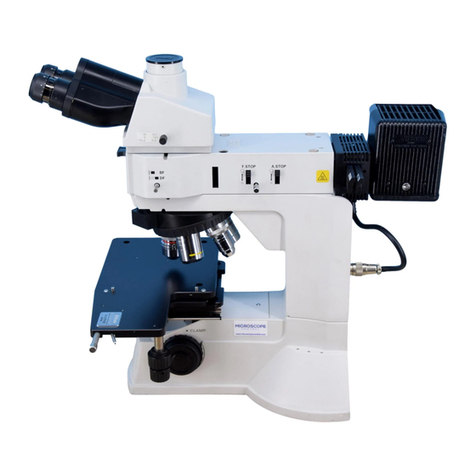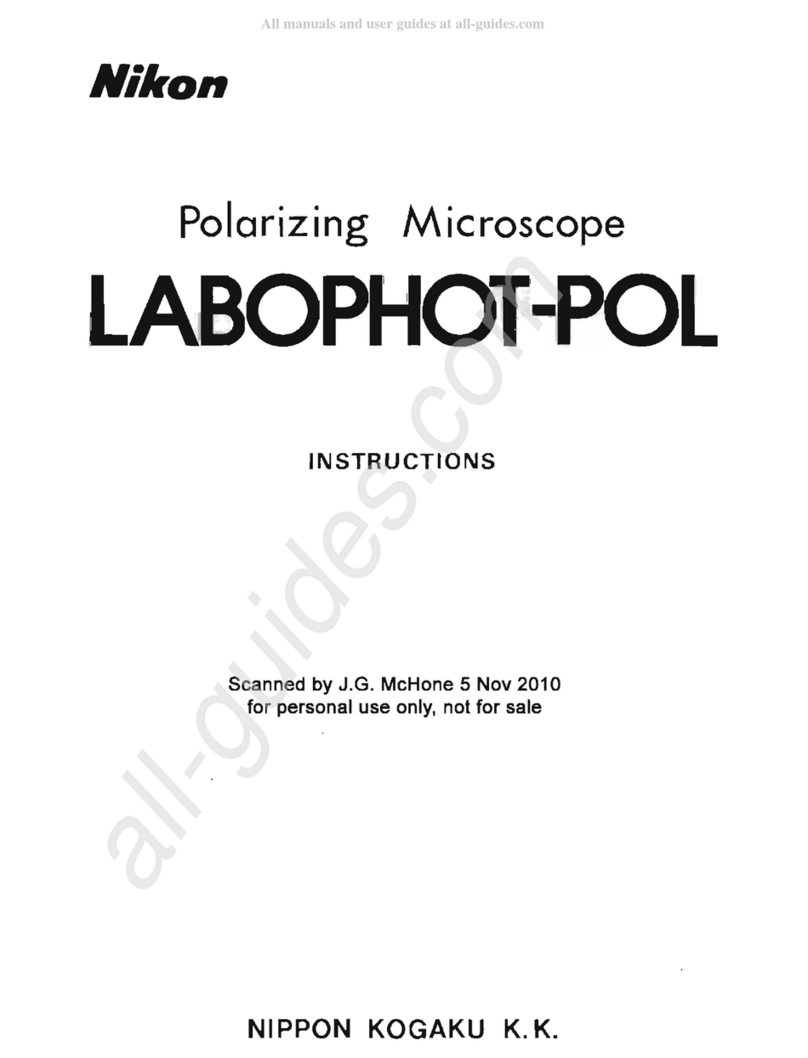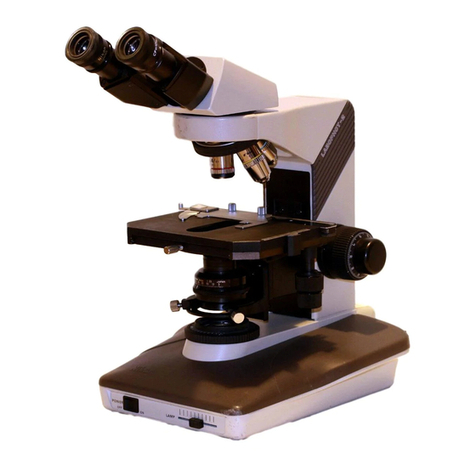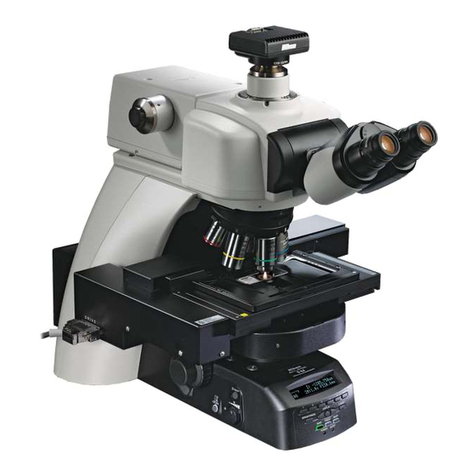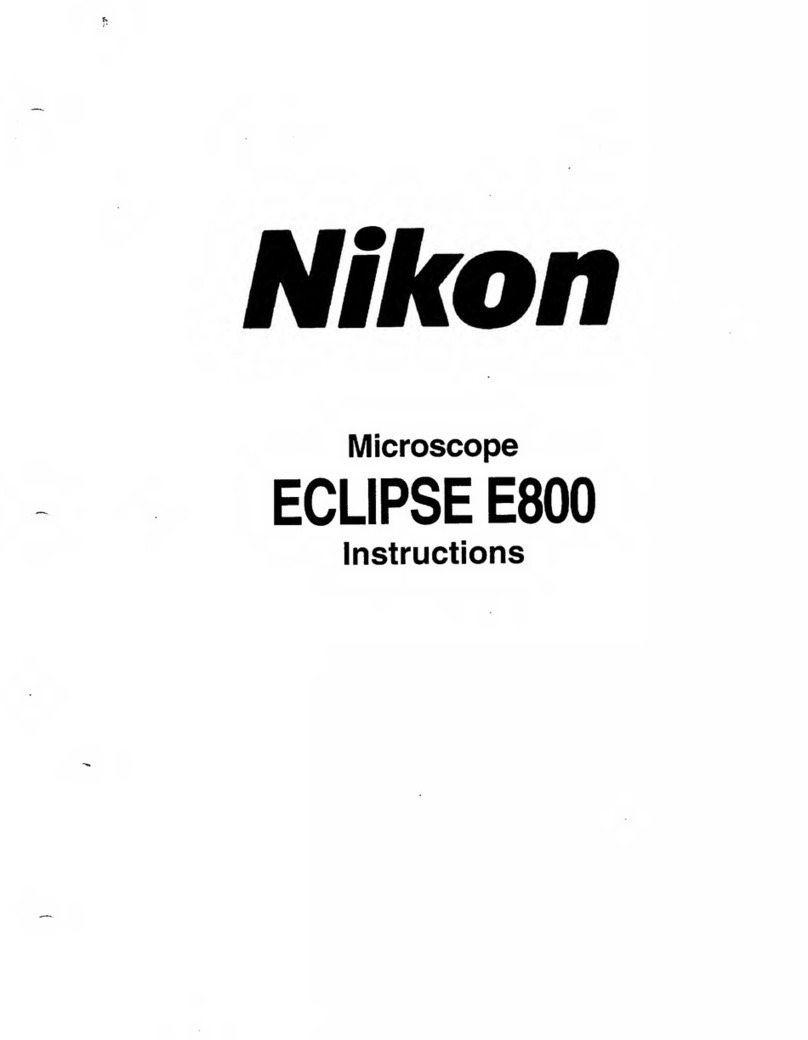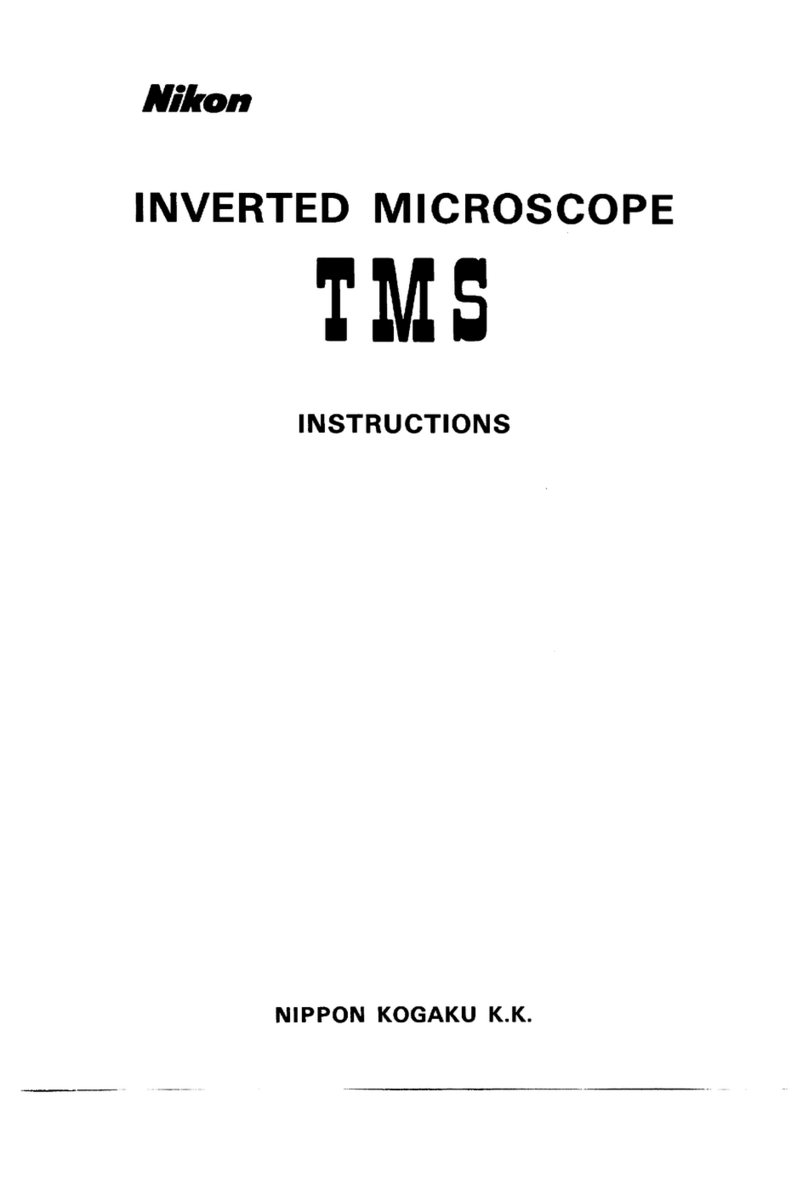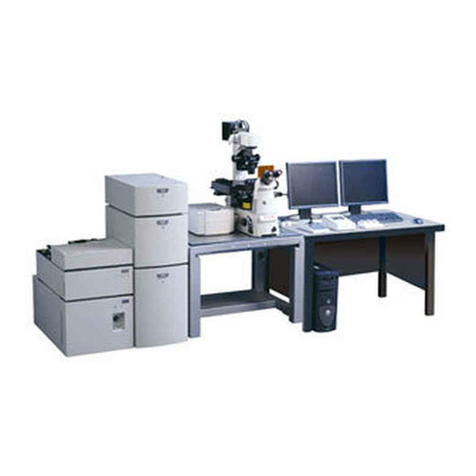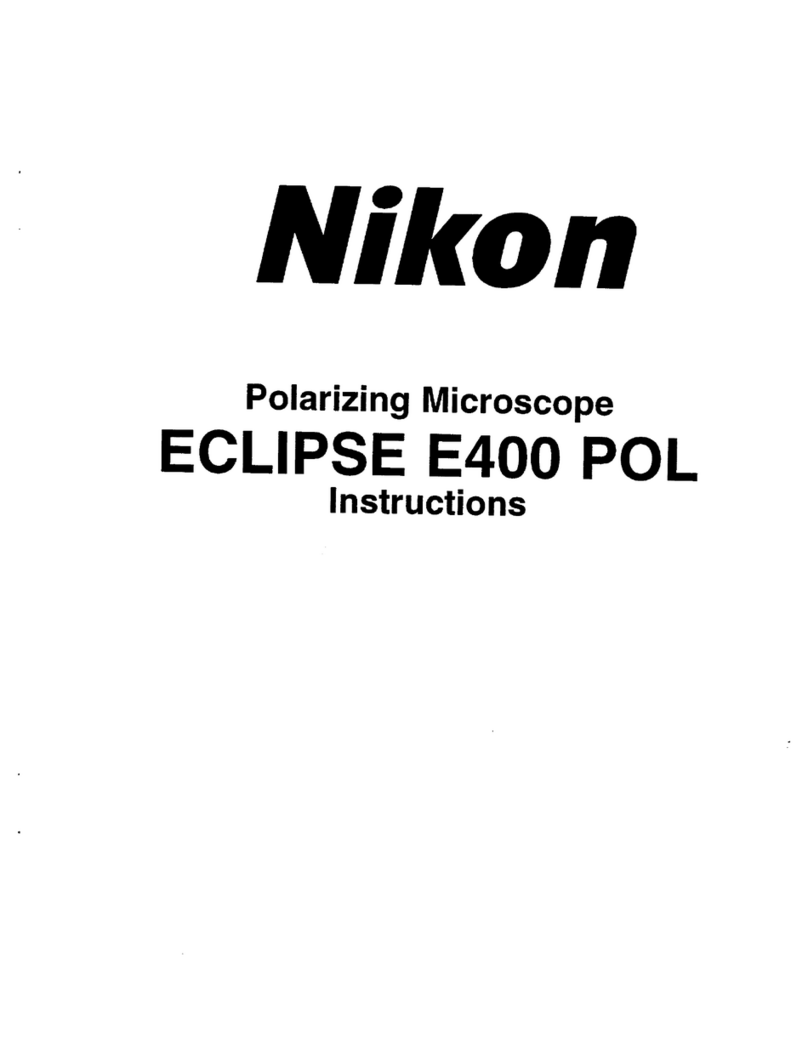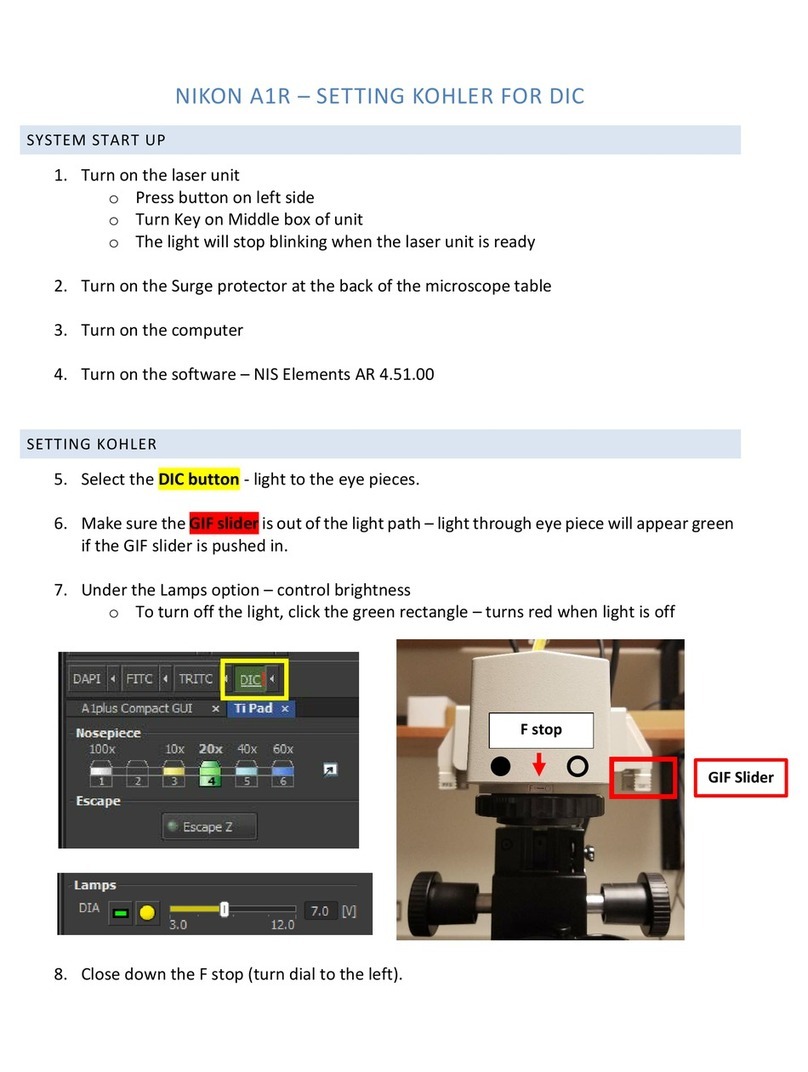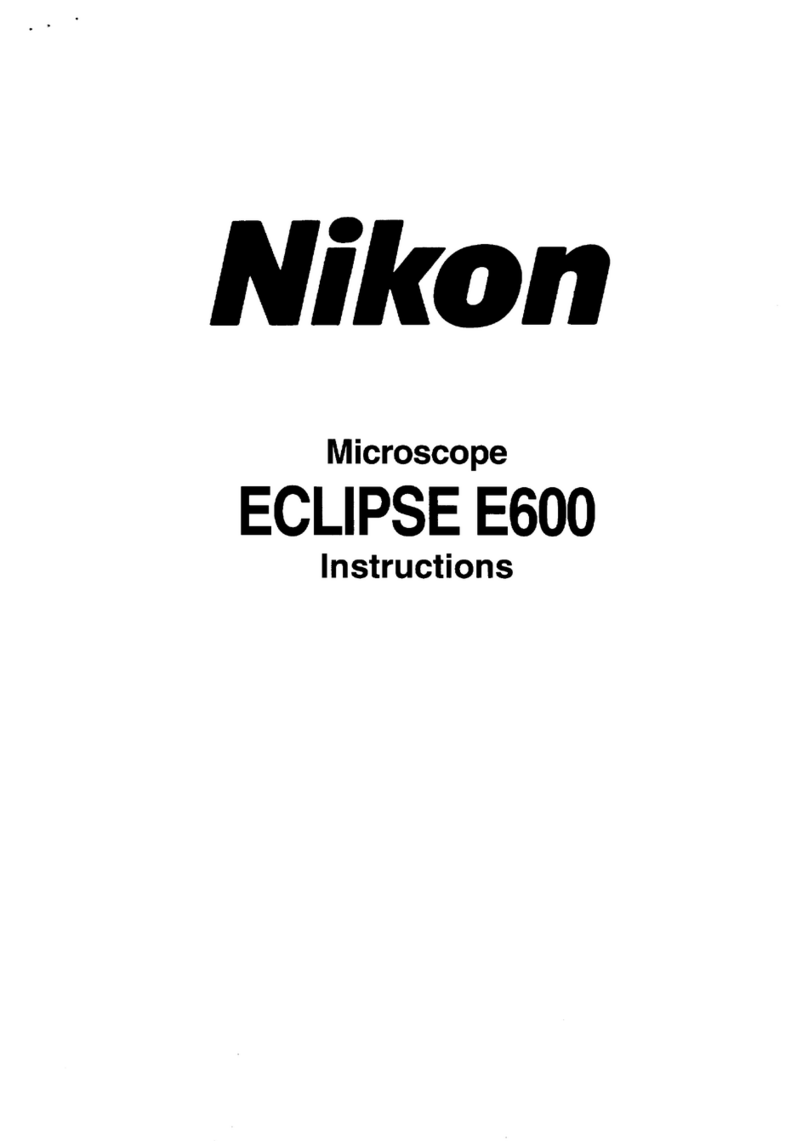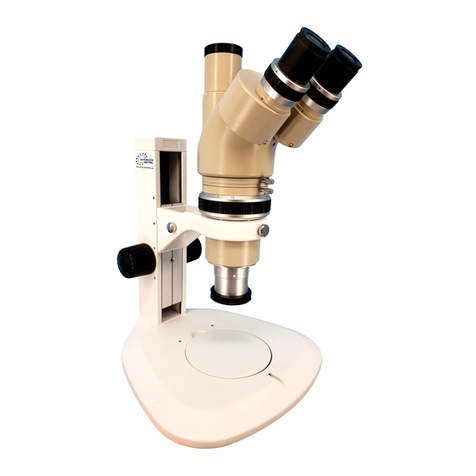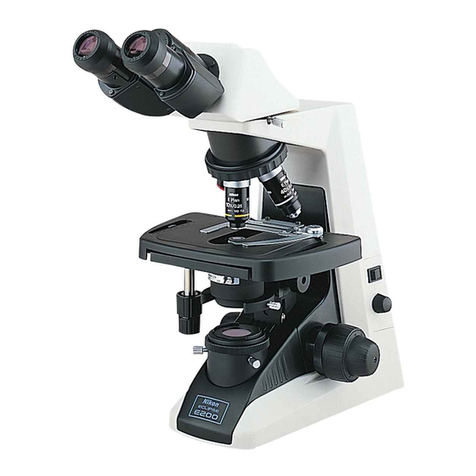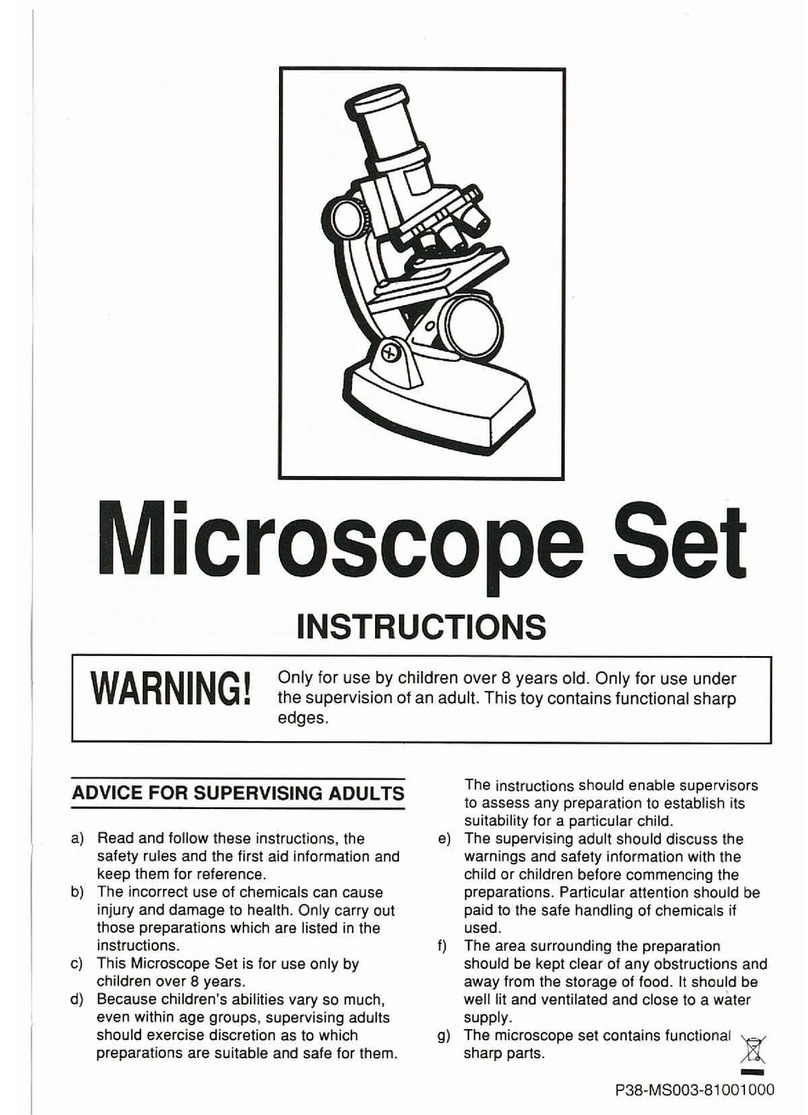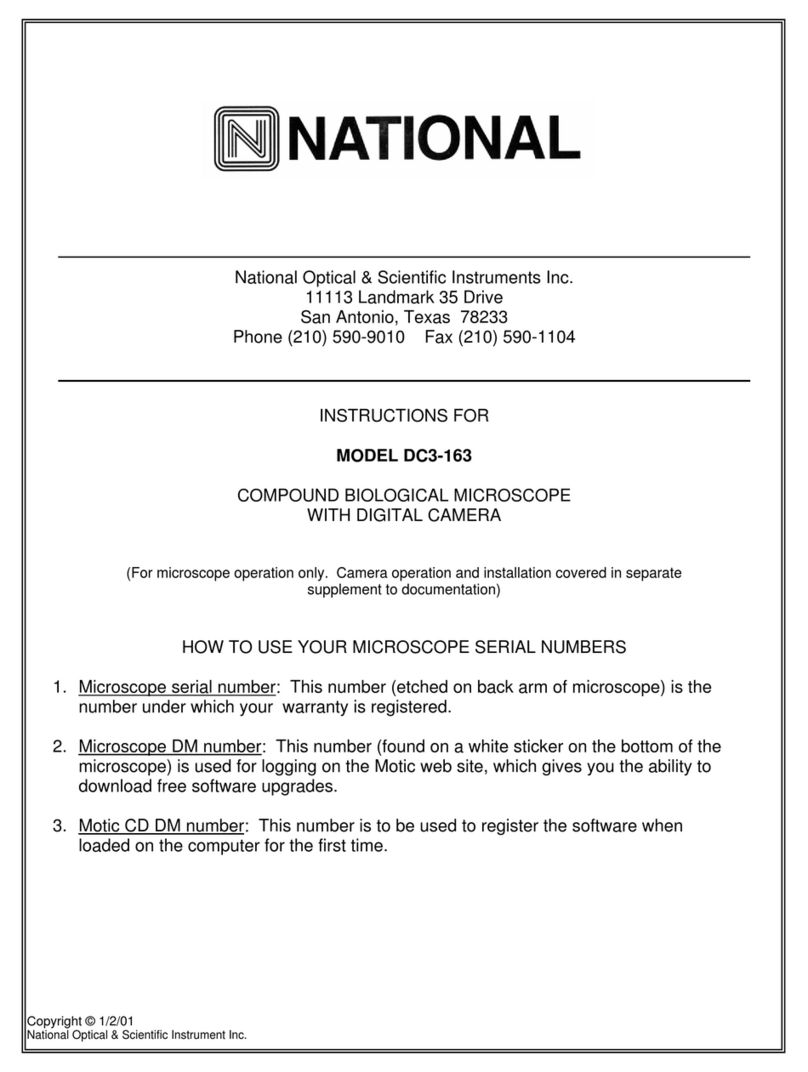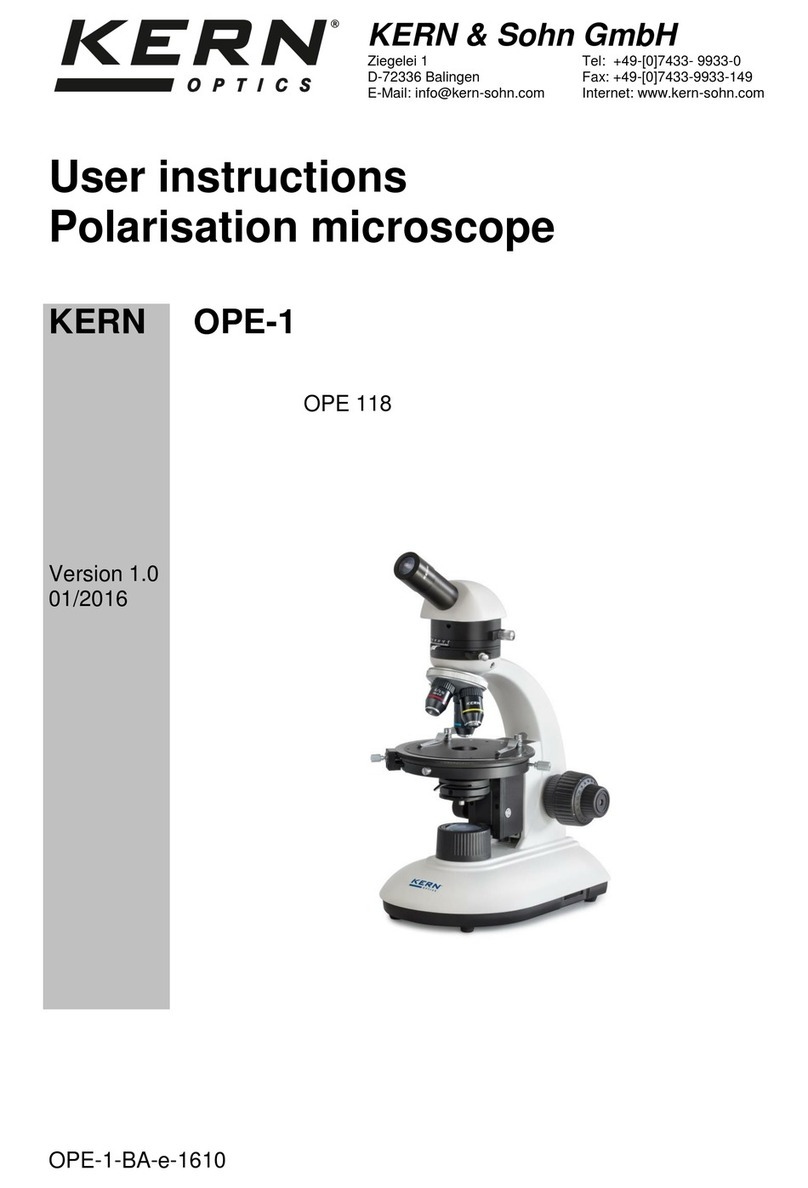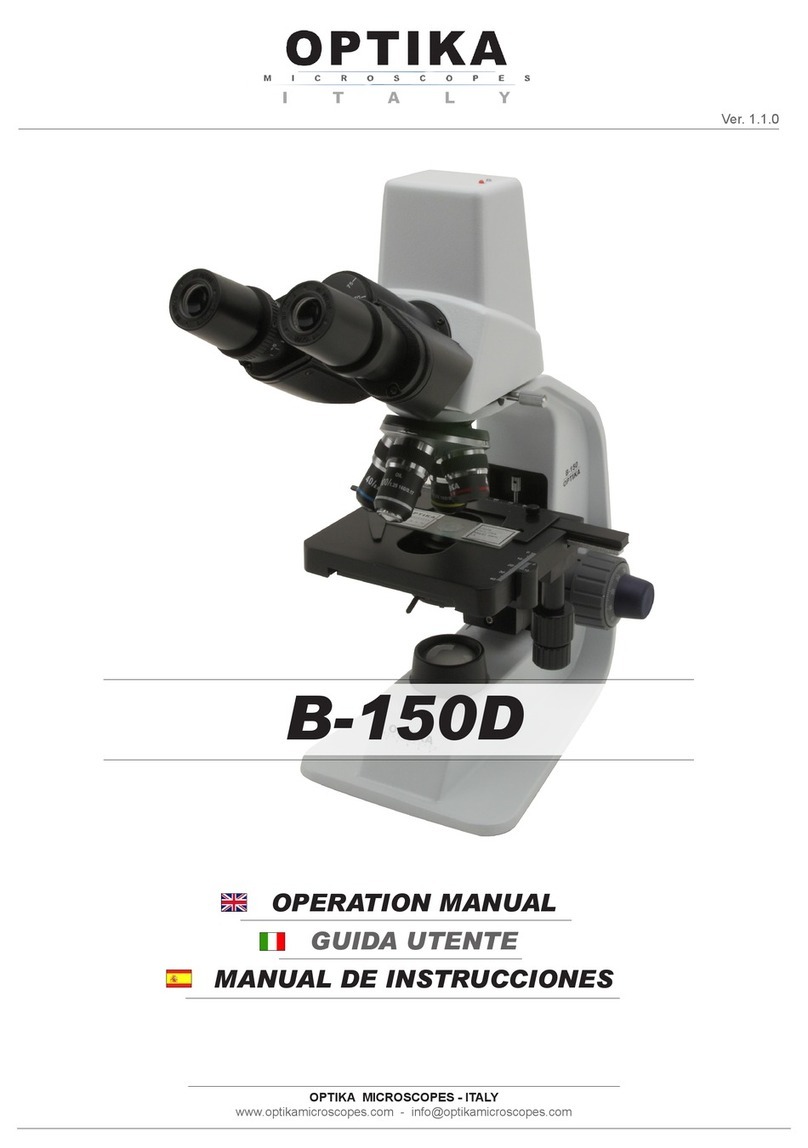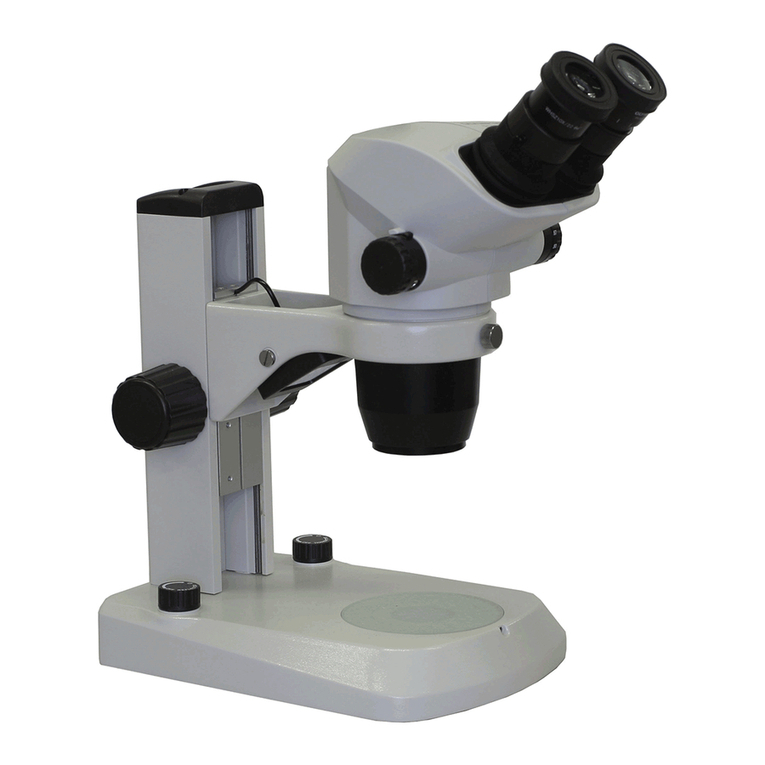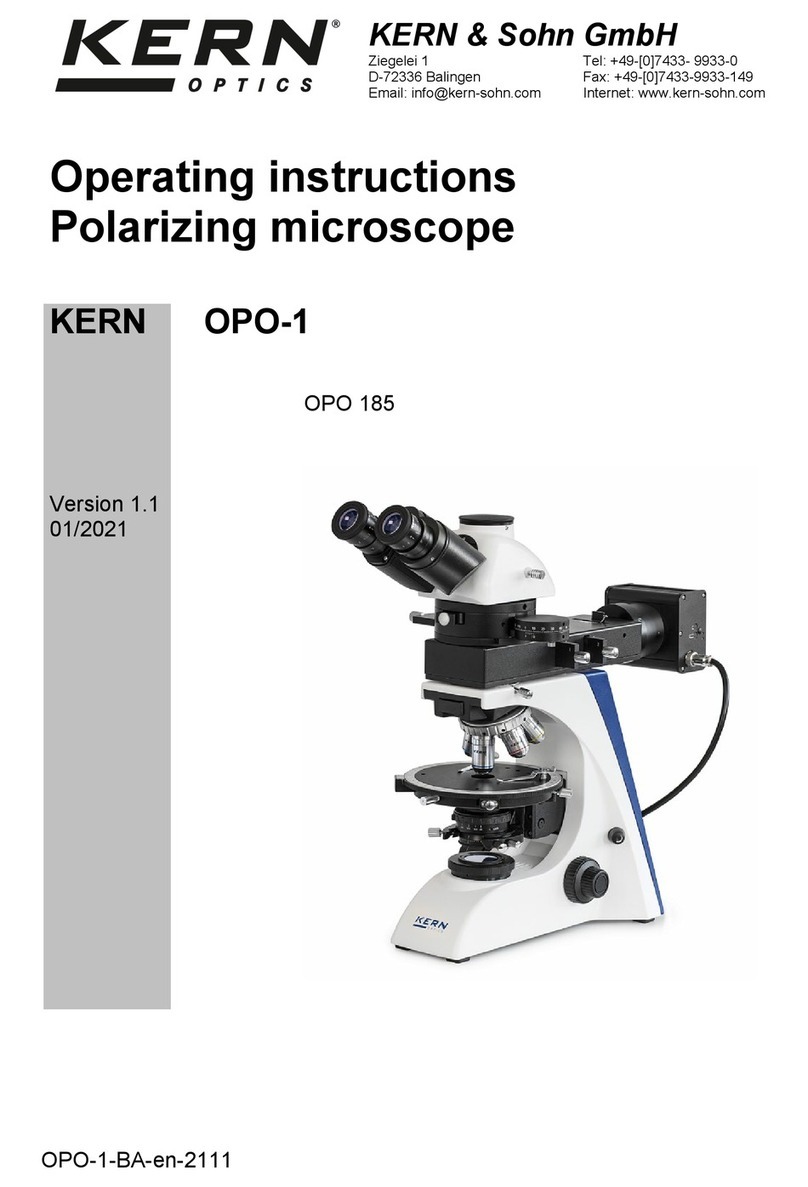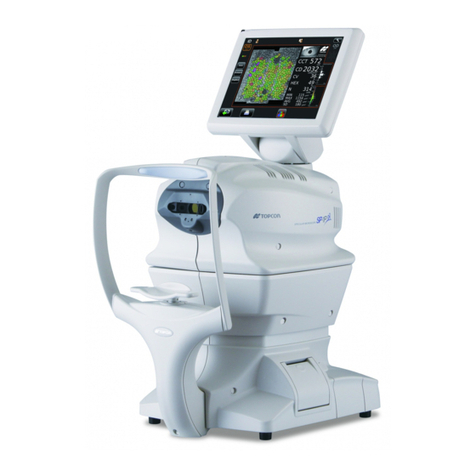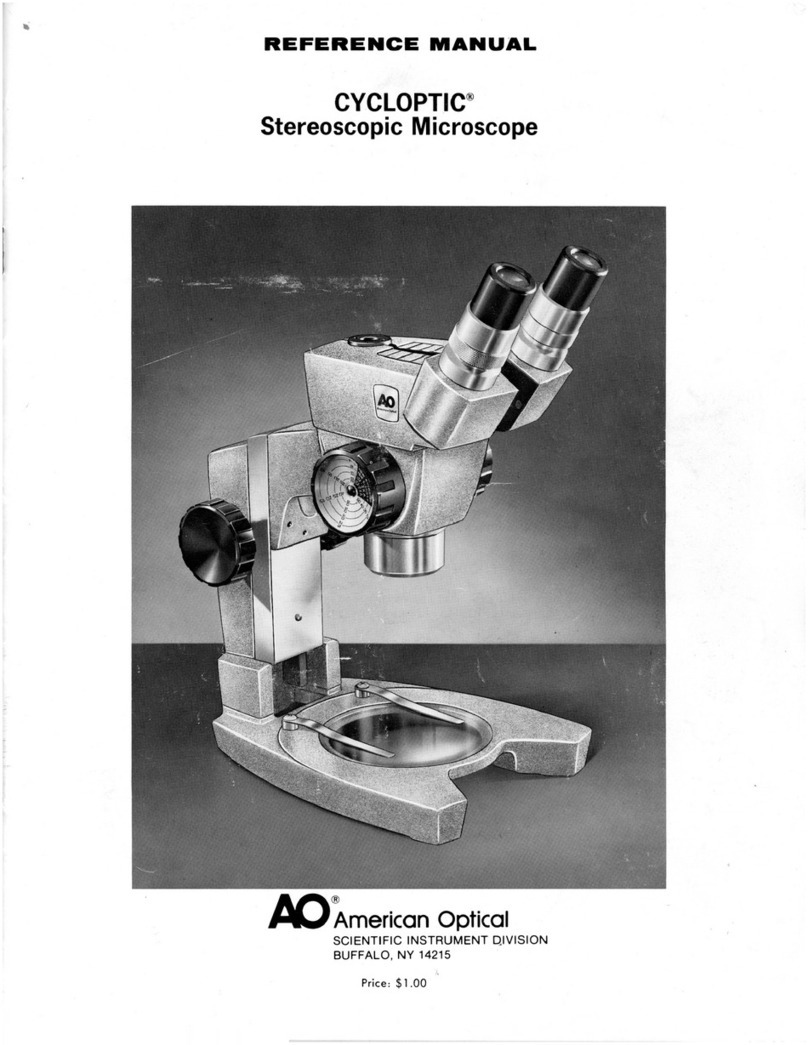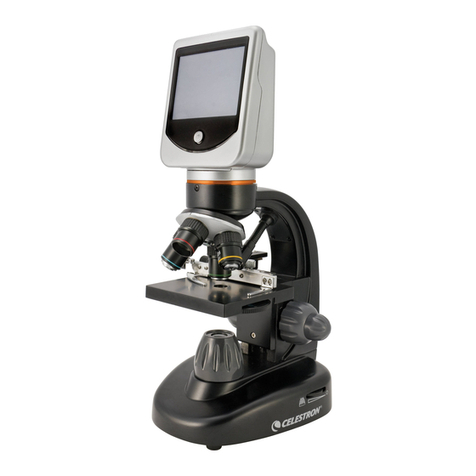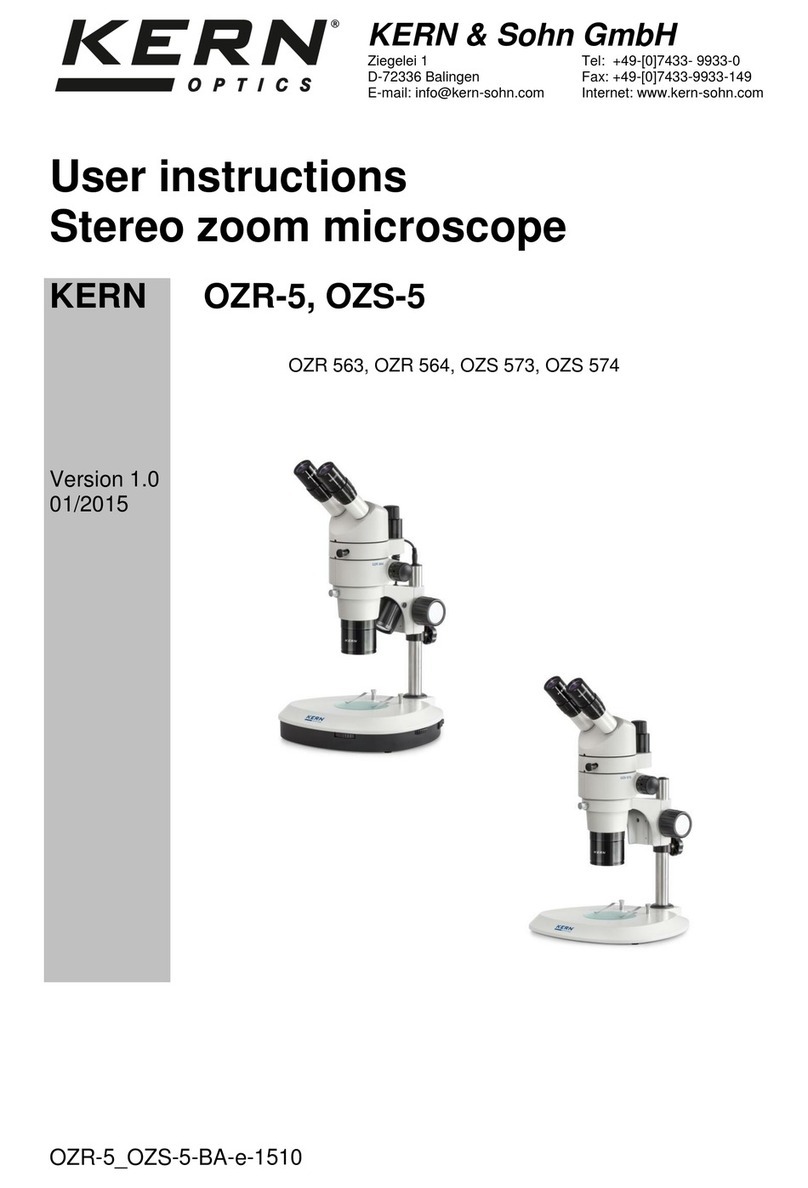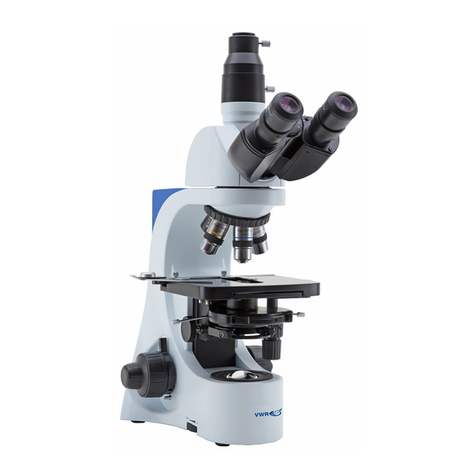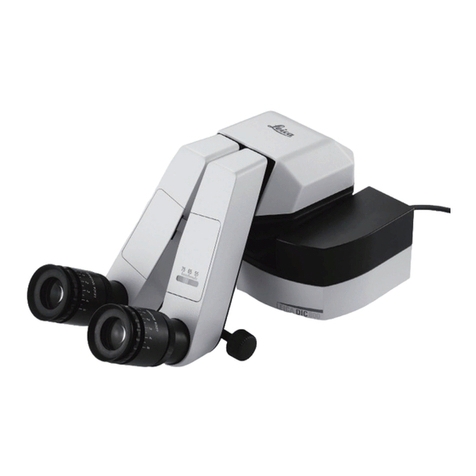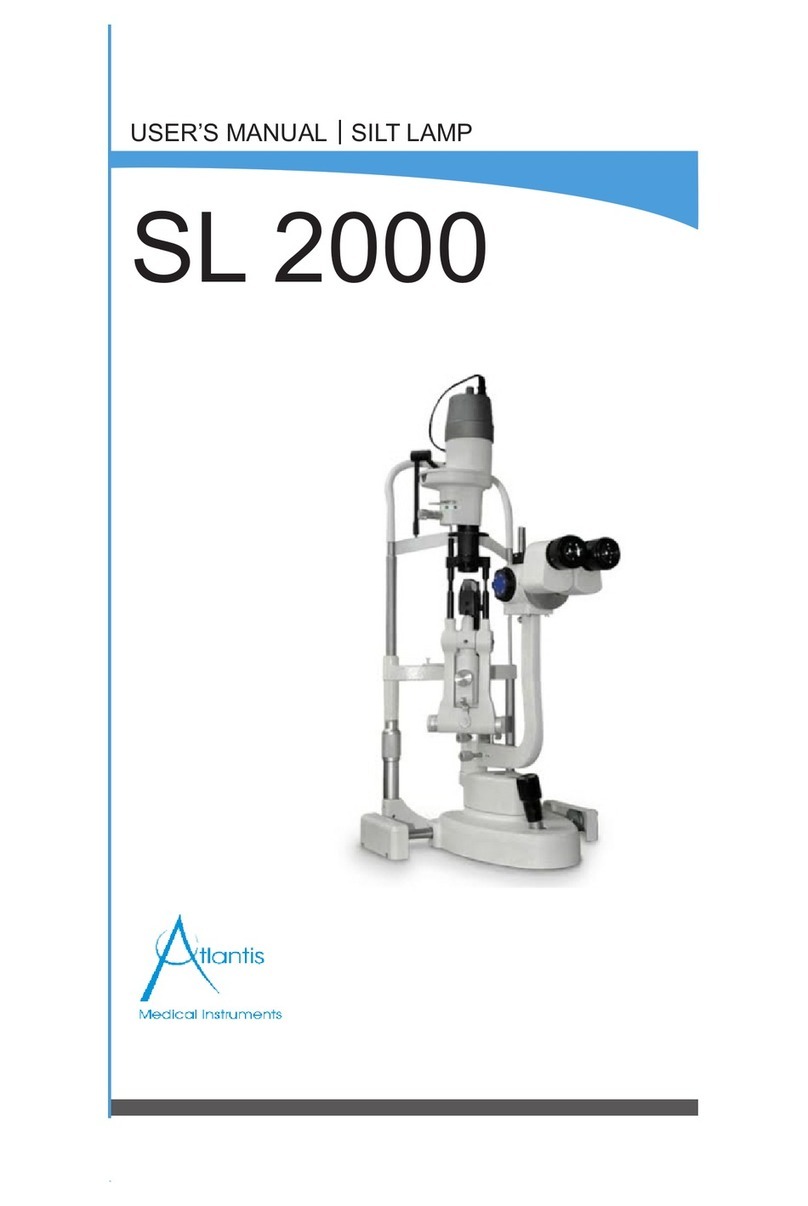
5
Safety Precautions
Notes on Handling the Product
1. Handle with care.
This stereoscopic microscope is a precision optical instrument.
Handle the product with care and avoid physical shocks. Physical
shocks during transportation and operation as well as forcible
operations may result in damage to the product.
2. Installation location
Note the following conditions when installing the product.
•Install the product in a location with a temperature of 0 to +40ºC
and a relative humidity of 85% or less (no condensation).
If installed in a hot or humid location, mold may form on the
lenses or condensation may occur inside, resulting in poor
performance or damage to the product.
•Do not use the product in a location subject to direct sunlight.
•Install the product in a location with little vibration.
•Install the product in a location with little dust and dirt.
3. Cleaning the lenses
Do not allow dust, fingerprints, or any other dirt to get on the lenses.
Dirt on the lenses will degrade the image quality. If a lense becomes
dirty, clean them as described below.
•Use an air blower to blow dust away. Remove any dust by brushing
off with a soft brush or by wiping gently with a gauze, if necessary.
•Only when there are fingerprints or grease on the lense, wipe
gently with a soft, clean cotton cloth, lens tissue, or gauze
dampened with a small amount of absolute alcohol (ethyl or
methyl). Do not use the same part of the cloth more than once.
•Absolute alcohol is highly flammable. Handle with care. Do not
use near an open flame.
•When using absolute alcohol, follow the instructions provided by
the manufacturer.

